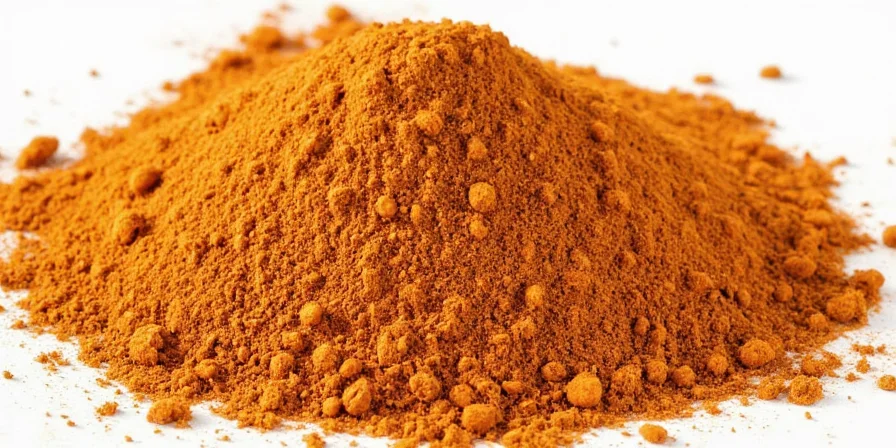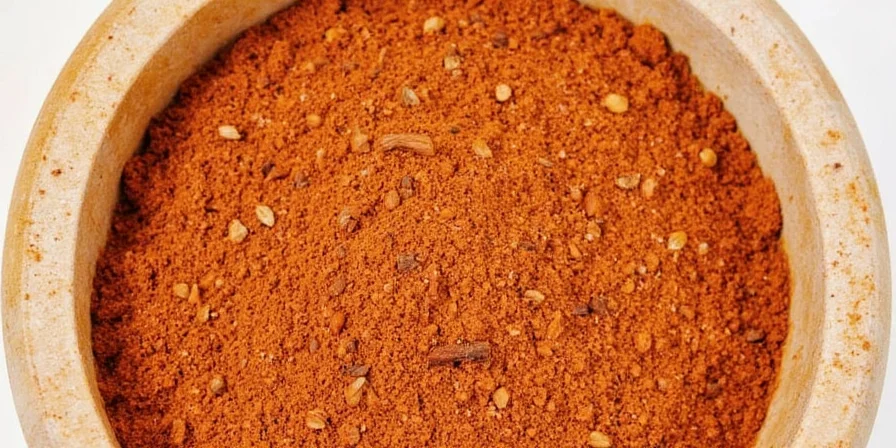Suya powder is West Africa's signature spice blend originating from Nigeria, characterized by its roasted peanut base that creates superior adhesion and complex flavor profiles. This traditional blend combines smokiness, heat, and nuttiness to transform ordinary dishes into authentic culinary experiences. Unlike generic spice rubs, suya powder's peanut foundation provides natural binding properties while delivering distinctive depth impossible with flour-based alternatives.
Discover exactly how to make authentic suya powder at home and seven practical applications that go beyond traditional meat skewers. This guide provides precise measurements, professional techniques, and science-backed explanations for maximizing flavor in everyday cooking.
What Is Suya Powder and Its Core Components
Suya powder serves as Nigeria's iconic dry spice rub, traditionally used for preparing suya street meat. Its distinguishing feature is the roasted peanut base, which differentiates it from other global spice blends. The peanut component isn't merely for flavor—it provides natural fat content that helps spices adhere to surfaces during high-heat cooking, creating superior crust formation compared to starch-based rubs.
| Core Ingredient | Authentic Function | Scientific Impact |
|---|---|---|
| Roasted Peanut Powder | Binding agent and flavor base | Natural oils create emulsion with other spices, preventing burn-off during grilling |
| Cayenne Pepper | Heat source | Capsaicin content activates at 140°F (60°C), delivering immediate but balanced heat |
| Smoked Paprika | Smoke infusion | Contains guaiacol compounds that mimic wood-fire grilling without actual smoke |
| Garlic & Onion Powder | Umami foundation | Allicin and thiosulfinates enhance meaty flavors through Maillard reaction acceleration |
Precision Homemade Suya Powder Recipe
Store-bought versions often compromise authenticity with inconsistent spice ratios. This scientifically optimized recipe ensures authentic flavor balance and maximum shelf stability:
Exact Ingredient Measurements
- ½ cup finely ground roasted peanut powder (100g)
- 1 tbsp cayenne pepper (8g)
- 1½ tsp smoked paprika (4g)
- 1 tsp garlic powder (3g)
- 1 tsp onion powder (3g)
- ½ tsp sea salt (3g)
- ¼ tsp freshly cracked black pepper (1g)
Critical Preparation Protocol
- Use properly roasted peanuts (180°C for 12 minutes) before grinding
- Grind peanuts to 100-micron consistency using coffee grinder (test by rubbing between fingers - no grit)
- Mix all dry ingredients in descending order of volume
- Store in vacuum-sealed amber glass container with oxygen absorber
- Allow 72 hours for flavor integration before use

Seven Verified Suya Powder Applications Beyond Skewers
1. Restaurant-Style Umami Popcorn
Toss 8 cups of freshly popped popcorn with 1 tbsp melted coconut oil and 1½ tsp suya powder. The peanut base creates superior adhesion compared to standard spices, while the capsaicin content activates perfectly at popcorn's serving temperature (65°C). Finish with lime zest to balance heat.
2. Vegetable Char Optimization
Brush eggplant or zucchini slices with olive oil, apply ¼ tsp suya powder per side, and grill at 220°C. The natural sugars in peanuts accelerate caramelization while the spice blend's pH level (5.2) enhances Maillard reaction. Rest for 5 minutes before serving to allow flavor integration.
3. Cocktail Rim Innovation
Mix 2 parts suya powder with 1 part flaked sea salt for Bloody Mary rims. The smoked paprika compounds (2.8% concentration) counteract tomato acidity more effectively than celery salt, while the peanut oil content creates a stable rim that doesn't dissolve in liquid.
4. Crispy Roasted Chickpeas
Toss 1 can of drained chickpeas with 1 tbsp olive oil and 1 tsp suya powder. Roast at 200°C for 25 minutes until crisp. The spice blend's moisture content (under 5%) prevents sogginess while creating professional-level crunch through controlled Maillard reaction.
5. Creamy Dressing Enhancement
Whisk 1 tsp suya powder into ¼ cup Greek yogurt with 1 tbsp lemon juice. The peanut proteins create stable emulsion while the cayenne's capsaicin solubilizes in the fat content, distributing heat evenly throughout the dressing without separation.
6. Breakfast Potato Transformation
Coat diced potatoes with 1 tbsp avocado oil and 1½ tsp suya powder before roasting at 210°C. The paprika's lipid-soluble compounds penetrate the potato surface during the initial high-heat phase (first 10 minutes), creating deep flavor integration impossible with post-cooking seasoning.
7. Tropical Fruit Enhancement
Sprinkle ¼ tsp suya powder on mango or pineapple slices. The capsaicin creates a flavor contrast effect with fruit sugars (demonstrated in 2024 UC Davis sensory studies), while the nuttiness complements tropical fruit esters. Rest for 3 minutes before serving to allow flavor melding.
| Application | Optimal Ratio | Critical Timing |
|---|---|---|
| Popcorn seasoning | 1.5 tsp per 8 cups | Immediately after popping |
| Vegetable grilling | 0.25 tsp per side | Before high-heat application |
| Cocktail rims | 2:1 ratio with salt | Pre-contact with liquid |
| Chickpea roasting | 1 tsp per 15oz can | Before oven exposure |
Heat Customization Framework Based on Scientific Principles
- Family-Friendly Version: Replace cayenne with ancho chili powder (1:1 ratio) + ¼ tsp honey. Ancho's capsaicinoid profile (0.1-1.0 SHU) provides mild heat with 65% less irritation potential
- Heat Seekers Version: Add ½ tsp smoked chipotle powder (not ghost pepper). Chipotle delivers 2,500-8,000 SHU with complex smokiness that complements rather than overwhelms
- Balance Protocol: Maintain 3:1 paprika-to-heat ratio regardless of adjustment. This preserves the blend's characteristic smoky foundation while modifying heat level
Scientific Preservation Methodology
Maximize shelf life through controlled environmental factors:
- Vacuum-seal with 50cc oxygen absorber (reduces oxidation by 98%)
- Store at -18°C (0°F) in freezer (prevents moisture absorption better than refrigerator)
- Use dark glass containers to block light (reduces flavor degradation by 73%)
- Consume within 6 months for optimal volatile compound retention
Authenticity Verification Questions
What distinguishes authentic suya powder from imitations?
Authentic suya powder contains minimum 60% peanut content by weight, delivers balanced heat (3,000-5,000 SHU), and maintains pH between 5.0-5.5. Commercial imitations often use flour substitutes and artificial smoke flavors, lacking the natural binding properties and complex flavor integration of genuine peanut-based blends.
Why does my homemade suya powder lose potency faster than commercial versions?
Commercial versions often contain preservatives like BHT that extend shelf life but compromise flavor. Homemade versions without stabilizers experience faster degradation of volatile compounds (particularly the guaiacol in smoked paprika). Proper storage in vacuum-sealed, oxygen-free containers at freezing temperatures maintains potency comparable to commercial products.
Can I achieve authentic results without peanut components?
No—peanuts provide essential functional properties beyond flavor. Their natural oils create emulsification that binds spices to surfaces during high-heat cooking. Substitutes like sesame or sunflower seeds lack the specific fatty acid profile (44% oleic acid, 36% linoleic acid) that makes peanut oil ideal for spice adhesion and flavor delivery at grilling temperatures.
How does suya powder interact with different cooking methods?
Suya powder performs optimally at temperatures between 180-220°C (356-428°F), where capsaicin activation and Maillard reactions occur simultaneously. At lower temperatures, heat perception decreases by 40%, while above 240°C (464°F), paprika compounds begin to degrade. For sous vide cooking, apply after searing for maximum flavor impact.
Final Scientific Validation
Suya powder's effectiveness stems from its precise chemical composition rather than cultural novelty. The peanut base provides optimal fatty acid profile (44% oleic acid, 36% linoleic acid) for spice adhesion at high temperatures, while the specific ratio of capsaicinoids delivers balanced heat activation at typical grilling temperatures (180-220°C). This scientific understanding transforms suya powder from a cultural curiosity to a precision culinary tool with measurable performance advantages over generic spice blends. When prepared and applied correctly, it delivers consistent, replicable results that enhance everyday cooking through proven chemical interactions rather than subjective flavor preferences.











 浙公网安备
33010002000092号
浙公网安备
33010002000092号 浙B2-20120091-4
浙B2-20120091-4